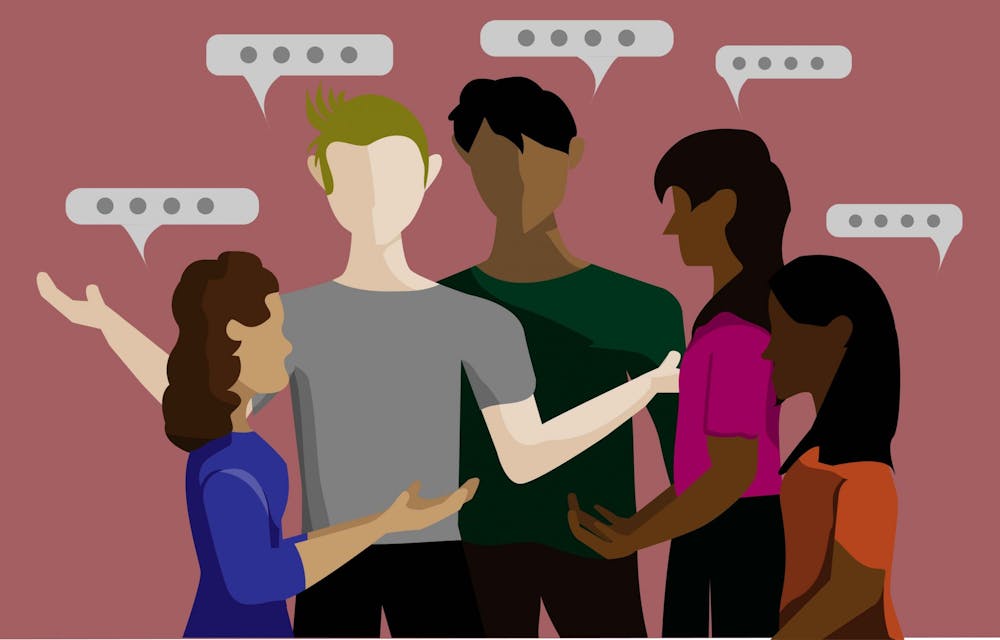Amid a flurry of state legislation bans, protests and national media coverage of critical race theory, ASU hosted a webinar on Aug. 24 addressing myths and misconceptions surrounding it in K-12 classrooms.
The four-person panel discussion, which was held over Zoom and livestreamed on Facebook, featured three award-winning K-12 teachers from Arizona, Utah and Arkansas. The event was hosted by Project Humanities, an ASU initiative that engages in national and local humanities discourse with public programming.
"Most people don't know what (critical race theory) is," said panelist Kareem Neal, an esteemed special education teacher in Phoenix.
Despite a general lack of knowledge on the subject, media coverage of critical race theory and related controversy has ballooned over the past months. Fox News in particular mentioned critical race theory 1,800 times between Feb. 1 and June 13.
Rashad Shabazz, an associate professor in the School of Social Transformation and the School of Geographical Sciences and Urban Planning, described critical race theory as a "conceptual tool to understand the world around us."
The body of scholarship that came to be known as critical race theory began with the work of a number of legal scholars in the 1970s and 1980s, including Kimberlé Crenshaw. It initially served as a method of analyzing racism in institutional, administrative and legal contexts.
"Critical race theorists such as myself, or people who utilize that body of knowledge, we are not concerned with individuals," Shabazz said in an interview. "We are concerned with institutions."
READ MORE: Rashad Shabazz's Chicago
Only in the 1990s did some theorists begin applying critical race theory more fluidly to other academic fields, including education.
In some recent media, however, the term critical race theory has been misused as a catch-all buzzword for any controversy surrounding race, history and language.
"Critical race theory is being conflated with anti-racism work," said Neal Lester, director of Project Humanities and host of the event.
During the event, Lester and other panelists analyzed viral documents which claim words such as "equity," "identity" and "colonialism" are indicators of critical race theory in the classroom.
In July, Gov. Doug Ducey signed into effect House Bill 2906, which prohibits government employees from engaging in "orientation or therapy that presents any form of blame or judgment on the basis of race, ethnicity or sex."
According to a press release, the bill would "prevent the teaching of critical race theory in Arizona public schools," and Ducey said he would not "waste public dollars on lessons that imply the superiority of any race and hinder free speech."
Rep. Michelle Udall (R-Mesa), in support of the bill, claimed in the press release that "critical race theory will do nothing but increase divisiveness in our communities."
"Neither the governor nor the representative have a clue what critical race theory is," Shabazz said.
According to Shabazz, this wave of legislation is an attempt by conservative politicians to galvanize their base, who articulate a "politics of white grievance" and express fear of ongoing demographic changes in the U.S. Eight states have already passed similar legislation and around 20 more are actively considering measures to "ban" critical race theory.
"It's nuisance legislation. It's to fan their base. I see no logic in it other than that," Beth Blue Swadener said.
A professor of justice studies at ASU with a doctorate in curriculum and instruction, Swadener has a lifelong history working on anti-racist education practices. She advocates for the use of critical race theory's analytical approach to adjust curriculum and pedagogy in public schools to be more inclusive and historically accurate.
"Children can handle it," Swadener said. "They have an innate sense of social justice, usually using the word 'fairness.' They want things to be more fair."
Both Swadener and Shabazz emphasized that, despite some prominent political rhetoric, nothing about critical race theory is anti-white.
"They want to look for an anti-white attitude that they’re just not going to find," Swadener said.
Throughout the Project Humanities event, Lester and other panelists questioned the timing of the recent backlash against critical race theory and anti-racism language.
Before the nationally recognized murders of George Floyd and Breonna Taylor, among others, and the historical Black Lives Matter protests in 2020, critical race theory was not a household term. Now it is.
"If there was a real push against critical race theory it would have come before now," Lester said. "Why now? It's not coincidental that it's now."
Though the panic around critical race theory is a recent phenomenon, legislation attempting to ban education relating to the history of race and racism is not new in Arizona.
In 2010, the Arizona legislature passed a law prohibiting schools from teaching classes "designed primarily for pupils of a particular ethnic group" or which "advocate ethnic solidarity." The law was declared unconstitutional and struck down by a federal judge in 2017.
Shabazz worries about the impact that conservative rhetoric surrounding critical race theory could have on the classroom setting, especially among populations that express white supremacist sentiments.
Similarly, the teachers in the Project Humanities event voiced concerns about a pattern of parent hostility toward teachers. Panelist Kellie May noted that some children have been instructed by their parents to film their teachers for evidence of critical race theory being utilized in the classroom.
"Critical race theory demands courage, and there's lots of cowardice," Shabazz said. "That cowardice, mixed with grievance, is dangerous. I think it's going to erupt into something horrific."
Reach the reporter at ammoulto@asu.edu and follow @lexmoul on Twitter.
Like The State Press on Facebook and follow @statepress on Twitter.
Continue supporting student journalism and donate to The State Press today.




